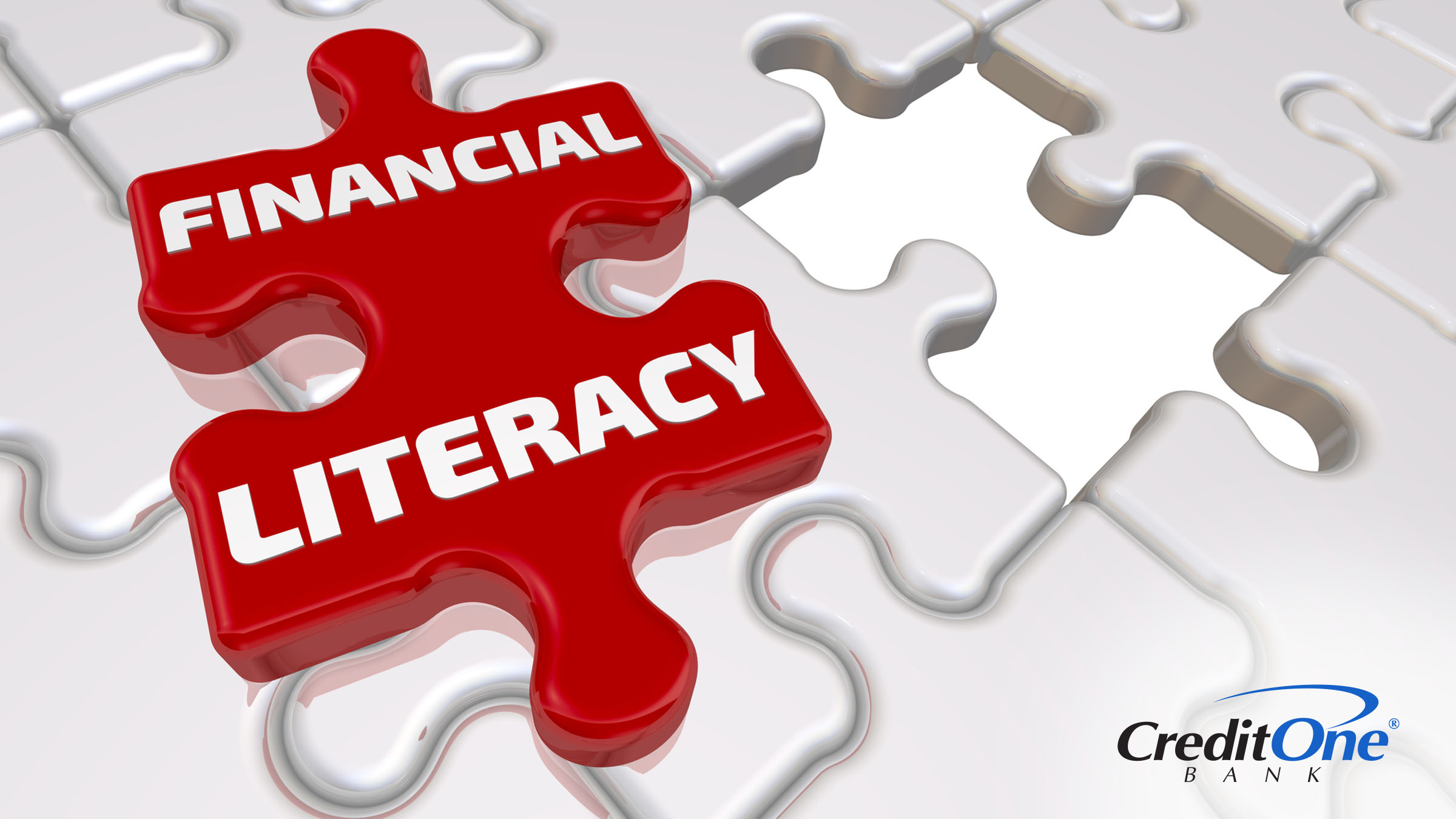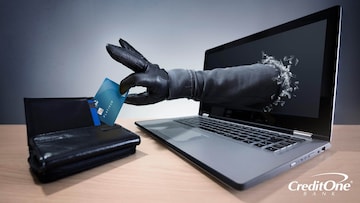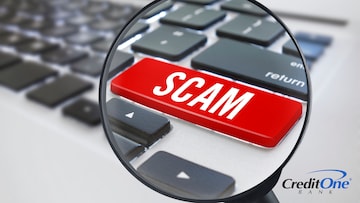A Guide To Improving Digital Financial Literacy
December 19, 2023
Topics:
Financial TipsIt’s never too late to build your digital financial literacy. Here are the latest skills for managing and protecting your money in the digital age

Financial literacy has always been important, but the digital era has impacted it in many ways. New technologies like online banking, cryptocurrencies, online subscriptions and other digital assets are changing the ways we think about money. Similarly, cybersecurity threats are impacting how we deal with scams and other forms of fraud.
In this guide, we’ll take a look at all of these topics, and help you understand how to improve digital financial literacy — for yourself and your kids.
What Is Digital Financial Literacy?
Digital financial literacy is where digital literacy and financial literacy come together. Digital literacy is about being tech-savvy and effectively using computer-based platforms, products and services. Financial literacy is about understanding financial topics and practices. So digital financial literacy is knowing how to navigate and use financial concepts and tools in a digital world.
It’s almost impossible to avoid technology in the modern age, so digital financial literacy is becoming increasingly important. It’s a good idea to know what various types of financial technology are available, as well as when and how to use them and why they’re a benefit.
Understanding the Digital Financial Landscape
Once upon a time, your bank would give you a checkbook for your checking account and a passbook for your savings account. You would go into the bank with paper money or a paper check, fill out a paper transaction slip, give it to the teller along with your bank book, and wait for a printout of your current balance. The skill of balancing your checkbook was crucial because otherwise you’d have no idea how much money was in your account.
These days, all of that can be done and accessed digitally. You can even deposit a check through your bank’s mobile app by taking a photo and uploading it. You almost never need to go into a bank if you don’t want to, and in fact, more and more banks don’t even have brick-and-mortar outlets. Instead, these online banks arm you with a robust web-based account or mobile app for monitoring, moving, withdrawing or depositing your funds … any time you like.
According to the World Bank, two-thirds of adults across the globe use electronic payment processes. And even in developing countries, the digital revolution has transformed how people can access and use money.
The increasing reliance on tech to make financial decisions helps both institutions and consumers. Banks can immediately access your credit score and payment history when needed, and you can easily research and compare credit cards and other financial offerings.
Online banking and digital payments
Despite being ubiquitous now, online banking actually hasn’t been around that long. Some banks offered rudimentary account access through TV and telephone in the mid-eighties, but the first true internet banking was launched by Stanford Federal Credit Union in 1994.
By the turn of the century, you could get your account balance and other basic information through text message, which is called SMS banking. But modern mobile banking wasn’t a thing until smartphones became widespread, starting in 2007. Then Bitcoin was invented in 2008, followed by other cryptocurrencies. Now it’s safe to say that digital payments, online banking, and technology’s impact on personal finance won’t be going away anytime soon.
Cryptocurrencies and blockchain
When you first hear about cryptocurrencies, they probably sound … well, kind of cryptic. And in fact, they are based on the science of cryptography (like a secret decoder spy ring), which makes them super secure.
Cryptocurrency is just another form of digital money, like the numbers that appear in your bank account. The difference is that crypto is typically decentralized, meaning not controlled by a bank or government. Many cryptocurrencies — including Bitcoin, the original one — live on a blockchain, which is a shared digital spreadsheet (or “distributed ledger”) literally made up of a chain of blocks. Computers make calculations and write each transaction into the current block on the chain, making it nearly impossible to reverse or hijack those funds.
While you don’t need to know more than this rudimentary description, it’s essential to understand that cryptocurrencies are changing the financial landscape. Some are designed for making purchases while other types are better suited to long-term investing. Younger generations like Gen Z have embraced and adopted the use of crypto, knowing they represent the future of finance.
Credit in the digital age
Digital finance has reshaped traditional credit systems as well. You can now access your credit score through your credit card or bank account any time you like. That allows you to monitor and see at a glance how your financial habits have impacted your score, for better or for worse.
You can also apply for a credit card and get an instant decision, make payments and manage your cards online or through a mobile app, and even get real-time alerts for urgent issues. Gone are the days of waiting for a statement to arrive in the mail and then sending off a paper check and hoping it gets there on time.
Key Digital Financial Skills to Develop
When it comes to digital financial literacy, focus on mastering some crucial skills. Installing mobile apps and desktop programs, setting up notifications, reviewing accounts regularly and keeping them secure are all important steps.
Efficient use of digital financial tools
Your smartphone or computer is your personal economic toolbox, and there are plenty of digital tools to help you optimize your finances.
- Budgeting apps connect to your various bank accounts, credit cards, investment accounts, subscriptions and other bills. They generally categorize your expenses for you, let you know when bills are due, identify areas to save money, and make it easy to create a spending plan.
- Digital wallets are apps that let you store your encrypted credit cards, membership cards or cryptocurrency so you can access and use them with just your mobile phone. Digital wallets come pre-installed with your mobile OS or phone, such as Apple Pay, Google Pay and Samsung Pay. You can also download and install secure third-party wallets if you want extra features.
- Robo-advisors are digital platforms that give you automated investment or financial planning recommendations based on algorithms. When you create your account, you’ll provide information about your financial goals and risk tolerance that allow the “robot” to make decisions without human intervention.
Learning how to use these tools effectively will simplify your life and save you time.
Safe and secure online transactions
Safety is an important factor during digital financial transactions. Legitimate payment apps, banking websites, and e-commerce platforms are usually extremely secure, but being aware of red flags will help keep you and your money safe online.
- Security is shown by an “s” and a lock. So if you see https rather than just http in the URL, you know the site has a Secure Sockets Layer (SSL) certificate installed for encryption. You should also see a little lock icon in your browser bar.
- Trust seals like VeriSign Trust, TRUSTe or TrustedSite certifications show the business has gone through a verification process and the site is guaranteed safe. Check for these logos, even if there’s no SSL.
Protecting Your Digital Financial Assets
When you open a bank account, you expect it to be safer than keeping money under your mattress. But if someone can break into your house and steal your cash, they can also theoretically break into your online account. However, a little bit of know-how, diligence and healthy skepticism can keep your funds safe and secure.
Prioritize digital privacy and security
Protecting your personal and financial information online all starts with you. Your biggest security hole can be your login information, especially if you use the same password for multiple sites or choose one that’s easy to guess. Some additional steps can also help you maintain privacy and security.
- Make passwords strong and unique, meaning one per site (never duplicated) with a lengthy mix of characters.
- Create memorable phrases with both uppercase and lowercase letters, numbers and special characters. For example, 2BorNot2B-ThatIsThe? Or Failure2Communic8!
- Enable two-factor authentication (2FA) so nobody can try logging into your accounts without you receiving a text message or a code in a secure app.
- Use secure Wi-Fi networks rather than open public networks, and consider logging in with a VPN to encrypt your IP address.
Understand digital financial scams
Your login habits may be lock-tight, but money always attracts fraudsters, so be aware of current schemes that try to bypass your security. Most online scams fall under one of a few categories, and follow similar patterns. Usually they play on your emotions and use a sense of urgency to prevent you from thinking logically.
- Spam is unwanted and unsolicited email that often tries to elicit some sort of payment, but doesn’t deliver anything in return.
- Spoofing is when a scammer impersonates another person, business or organization. That includes pretending to be your bank, the IRS, a charity, or even using your own email address in the “from” field.
- Phishing is an attempt to steal your personal info or login credentials to a website, whether by sending you a fake link or requesting some type of identification like your SSN. Smishing is phishing through SMS (text messages) and vishing is phishing through voicemail.
When it comes to spotting scams, look for spelling errors, bad graphics, and anything that appears incorrect. Hovering over a link without clicking will let you see the destination. Also remember that your bank, the government or a charity will never ask for personal details in a message. And they won’t ask you to pay with crypto or a gift card. If in doubt, contact the organization directly instead of answering the questionable communication.
Enhancing Digital Financial Literacy Through Education
Education is a life-long journey, especially when trying to keep up with fast-changing trends. To stay on top of digital financial literacy skills, continuous learning is key. The good news is that it can be fairly quick and easy. Look into online courses, webinars, videos, podcasts, and blogs on the topic — many of which are free.
Empowerment Through Digital Financial Literacy
Digital financial literacy isn’t just about learning vital skills. It can also empower you to make better decisions and improve your financial situation. You can apply the knowledge you’ve learned to your own digital financial practices, like online banking and email management, for the rest of your life.




